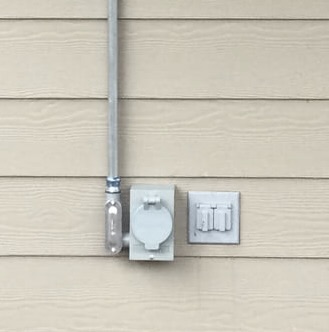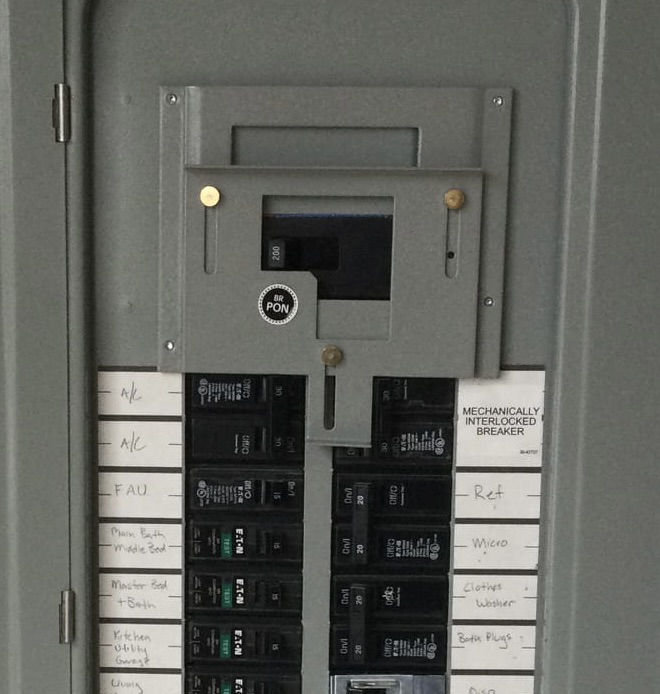We have been thinking about being more prepared for awhile now. Simple things like having some extra toilet paper and non-perishable food on hand.
But we recently took a big step. We contracted with an electrician to wire the power panel of our house for use with a generator. This allows the generator to basically power everything in the house with no need to run extension cords and such.
There were two key components to the project. First… we had to add a circuit for the generator “inlet”. This included a beefy new circuit breaker and wiring that went from the power panel to the back patio. The second component was an interlock kit. This ensures that you can never feed power from the generator back into the power grid. The interlock kit is simply a sliding metal plate. It’s notched in such a way that it physically prevents the main power breaker from being on at the same time the breaker for the generator is on. Nice and simple.
A fair portion of the cost for this project was running the circuit for the generator all the way to the back patio. On the back patio there is an “inlet” for the generator to plug into.

We did spring for a “tri-fuel” type generator. This generator can run off regular gasoline, propane, or natural gas. There happens to be a natural gas outlet right out on the back patio next to where we placed the generator inlet. That should work nicely in most cases. In the case where the natural gas supply is disrupted, we can always fall back to using propane.
For the curious… the electrician work, wiring, etc… cost about three times as much as the new generator. But this “manual” solution is still only a fraction of the cost of those next-level systems that automatically switch over whenever the power goes out.
